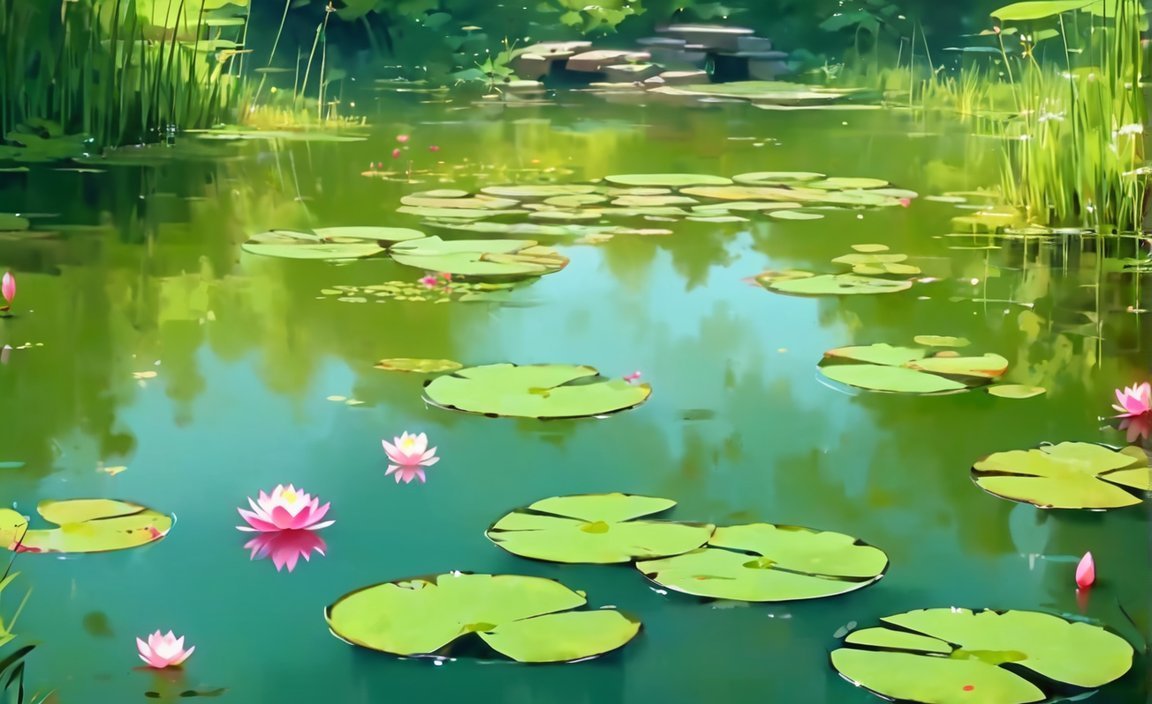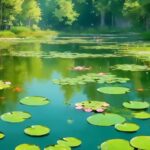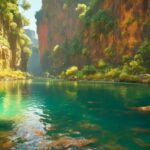Dive into the mesmerizing world of ponds! We’re unleashing 10 fascinating facts that will make you see these water wonders in a whole new light. From their mind-blowing biodiversity to their crucial role in the environment, you’ll discover what makes ponds so incredible. Whether you’re a nature nerd or just curious, this guide will quench your thirst for knowledge and ignite your appreciation for these aquatic treasures.
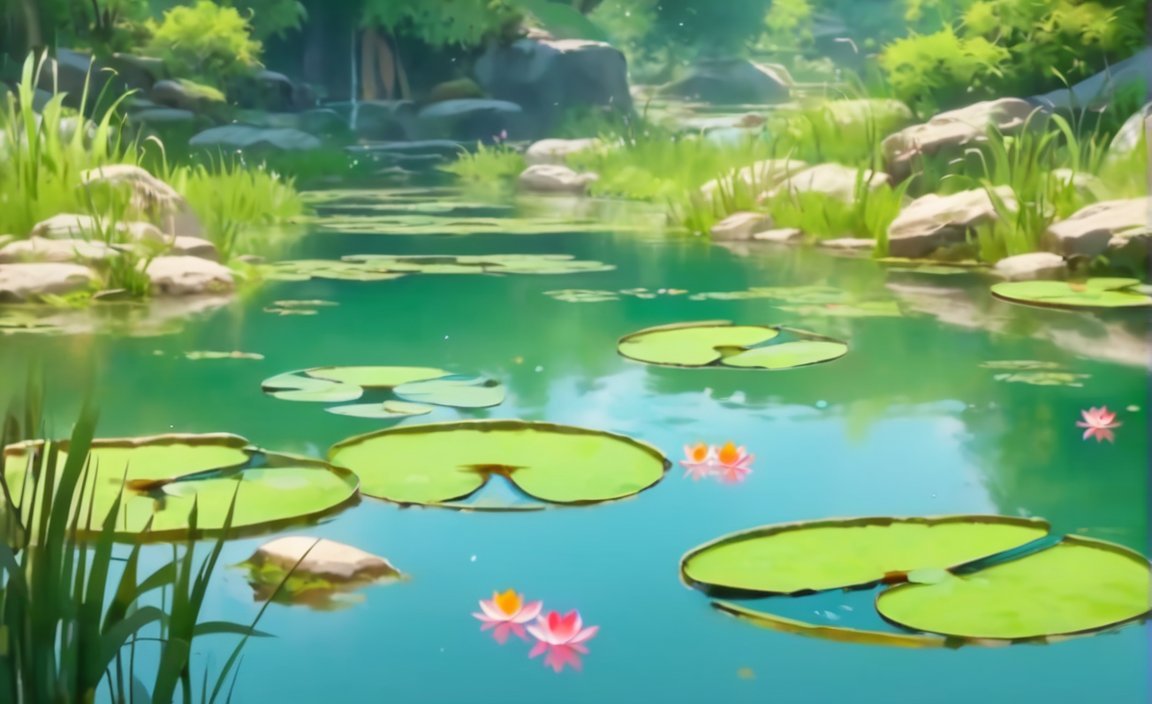
10 Fun and Fascinating Facts About Ponds
Ponds, those tranquil bodies of water that dot our landscapes, hold a treasure trove of secrets and ecological wonders. Here are 10 things you might not know about these fascinating natural gems:
- Ponds Can Be as Big as Lakes: While we often picture ponds as small, some can actually be vast, stretching for acres and rivaling the size of lakes.
- Ponds Are Global Citizens: These freshwater oases can be found in every nook and cranny of our planet, from bustling urban areas to remote wildernesses.
- Ponds Teem with Life: Far from being mere puddles, ponds are vibrant ecosystems teeming with aquatic plants, tiny creatures, and the occasional curious frog or toad.
- Ponds Foster New Life: Amphibians, reptiles, and insects rely on ponds as nurseries for their young, ensuring the survival of these fascinating creatures.
- Ponds Are Nature’s Orchestra: Frogs, crickets, and the wind rustling through the reeds create a unique chorus that can both delight and soothe the soul.
- Ponds Cleanse the Water: These humble bodies of water act as natural filters, removing pollutants and helping to keep our rivers and streams clean.
- Ponds Fight Climate Change: They play a role in mitigating climate change by storing carbon, reducing the amount of greenhouse gases in the atmosphere.
- Ponds Are Dynamic Ecosystems: Just like us, ponds evolve and adapt with the seasons and environmental changes, constantly presenting new surprises for observers.
- Ponds Are Distinct from Lakes: While both contain water, ponds are typically smaller and shallower than lakes, making them more intimate and cozy.
- Ponds Engage Our Senses: Whether it’s watching dragonflies dance across the surface or listening to the gentle lapping of water against the shore, ponds engage our senses and bring a sense of peace and tranquility to our lives.
Here are some fascinating facts you may not know about different biomes:
- 10 fun facts about biomes: Dive into the world of biomes and discover some amazing facts!
- 10 fun facts about grasslands: Explore the wonders of grasslands and uncover interesting facts about these vibrant ecosystems.
- 10 fun facts about the savanna biome: Step into the savanna biome and learn some surprising facts about this unique habitat.
- 10 fun facts about the African savanna: Get to know the captivating African savanna with these ten fun and intriguing facts.
- 10 fun facts about taiga biome: Delve into the enchanting taiga biome and discover ten fascinating facts that will leave you amazed.
Where in the World Can You Find Ponds?
Picture this: a tranquil haven tucked away in a bustling city park, or a hidden gem nestled deep within a secluded wilderness. No matter where you go, from the bustling metropolis to the remote backcountry, chances are you’ll stumble upon a pond. That’s because ponds are like a global treasure, gracing every continent apart from Antarctica.
These shimmering oases sprout up in a dazzling array of landscapes. From the manicured lawns of urban retreats to the untamed depths of untouched wilderness, ponds paint a vibrant tapestry across the planet’s diverse ecosystems. Their unwavering presence underlines their ecological worth, for they serve as essential breeding grounds for countless aquatic creatures, adding immeasurable value to the intricate web of life on Earth.
Ponds by the Numbers:
- Every major landmass (except Antarctica) boasts at least one pond.
- Ponds contribute significantly to biodiversity by providing homes to a vast array of plants and animals.
- Their adaptability and resilience have allowed ponds to thrive in a wide range of settings.
Here are a few intriguing tidbits:
- Urban oasis: Manhattan’s beloved Central Park boasts a sanctuary of ponds that create a serene refuge amidst the skyscrapers.
- Wild wonder: The remote Alaskan wilderness conceals countless pristine ponds, teeming with life unseen by human eyes.
- Global gems: From the lily-studded ponds of Japan to the salt flats of Chile, ponds exhibit remarkable diversity in size, shape, and composition.
What makes ponds a microcosm of life?
Ponds are like mini-worlds, teeming with life from the smallest creatures you can’t even see to creatures you can see with your own eyes. Think microscopic algae to lively frogs and graceful dragonflies. They’re like tiny Earths, supporting a surprising variety of plants, bugs, amphibians, and reptiles.
Here’s why ponds are so special:
They’re like a buffet for all living things!
Ponds are loaded with nutrients that keep all the little critters well-fed. It’s like an all-you-can-eat buffet for microscopic plants, animals, and even bigger guys like fish and frogs.
They’re like a resort with different rooms!
Ponds have different “rooms” for different creatures. Some parts are shallow and sunny, perfect for plants and algae to soak up the sun. Other parts are deeper and cooler, where creatures like insects and fish can hang out and hide from the heat.
They’re like a friendly neighborhood with everyone helping each other!
Ponds have a complex food chain, where everyone plays a part. Microscopic plants make food for small animals, which get eaten by bigger animals, and so on. It’s like a big circle of life, keeping the pond balanced and thriving.
They’re like safe havens for little ones!
Ponds are like nurseries for animals like frogs, insects, and even birds. They find shelter and food in ponds, and it’s where they can raise their little ones.
They’re like little water factories!
Ponds help clean and filter water, removing pollutants and keeping it clean for all the creatures that live in it. They also store water, which can be really important during droughts.
So, there you have it! Ponds are amazing little ecosystems that support a vast array of life. They’re like miniature versions of our planet, with all the different plants, animals, and food chains that make life on Earth possible. So next time you see a pond, take a moment to appreciate its beauty and its importance to the natural world.
Why are ponds vital breeding grounds?
Ponds are essential for amphibians, like frogs, toads, and salamanders, to reproduce and thrive. Here’s why:
A Safe Haven for Amphibian Eggs and Young
Ponds are like cozy little homes for amphibian eggs and babies. They’re shallow and often surrounded by thick plants, which protect them from predators and the sun’s harsh rays. And because they’re smaller than lakes, there are fewer fish and other big animals that could eat them.
A Breeding Bonanza
Ponds give amphibians enough space to mate and lay their eggs. They can swim around freely and find just the right spot to build their nests. This helps ensure that there will be lots of baby amphibians to keep the population going strong.
Plenty of Food to Grow On
Ponds are teeming with tiny creatures that amphibian babies and adults love to eat. There are insects, worms, and even algae that provide the nutrients they need to grow big and healthy.
Perfect for Metamorphosis
As amphibian babies grow, they need to change from living in water to living on land. Ponds provide the perfect environment for this transformation called metamorphosis. The shallow water lets them breathe air while still being able to swim around. And the plants give them hiding places as they develop their legs and lungs.
Conclusion
Ponds play a crucial role in the survival and success of amphibians. They provide a safe place for them to breed, hatch, and grow, ensuring that these fascinating creatures continue to enchant us for generations to come.
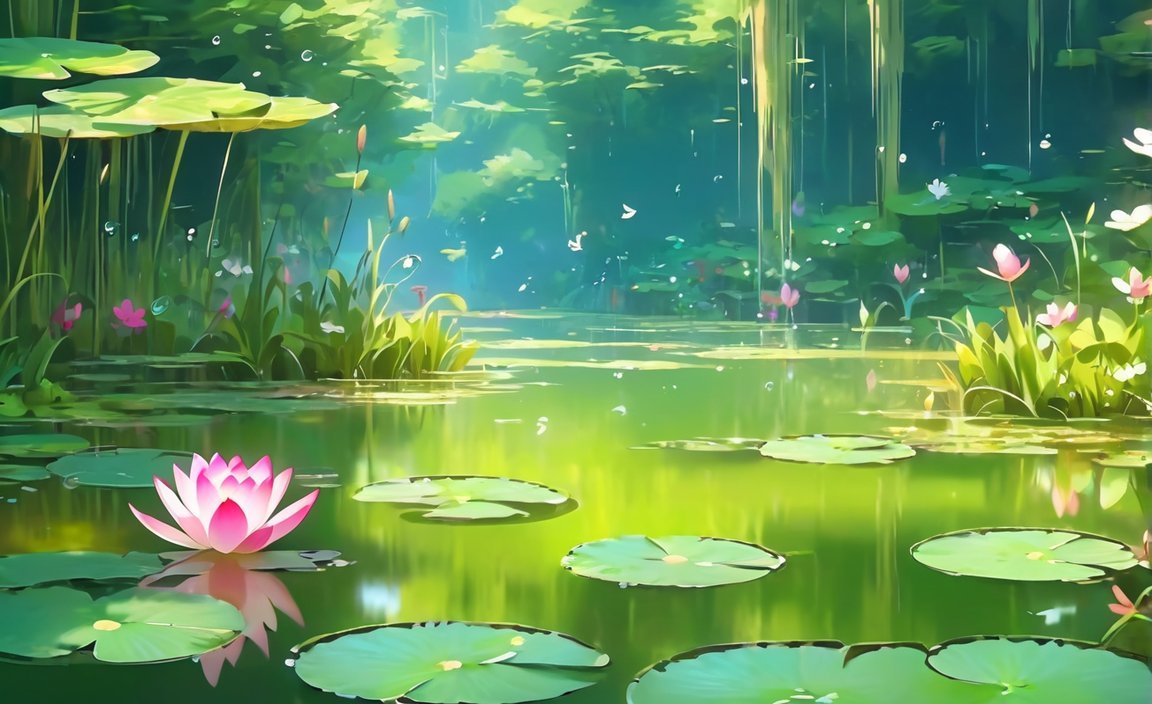
FAQ
Q1: How large can a pond get?
A1: Ponds can vary greatly in size, with some reaching the size of small lakes, such as the 285-acre Langley Pond in South Carolina.
Q2: Where are ponds commonly found?
A2: Ponds are found worldwide in diverse locations, contributing to the richness of local ecosystems.
Q3: What makes ponds so biodiverse?
A3: Ponds support an incredible array of life due to their nutrient-rich microhabitats, which sustain a complex food chain ranging from microscopic organisms to larger animals.
Q4: Why are ponds important for wildlife?
A4: Ponds serve as vital breeding grounds for amphibians, reptiles, and aquatic insects, providing a protected environment for their eggs and young.
Q5: How do ponds contribute to the environment?
A5: Ponds play a crucial role in the water cycle by storing freshwater and supporting aquatic ecosystems. They also act as carbon sinks, mitigating climate change.
- Guatemala vs. Costa Rica: Plan Your Trip Smartly - April 16, 2025
- Master Types of Pumps: Ultimate Guide to Selection - April 16, 2025
- Unlock Types of Makeup Secrets: Master Any Look Now - April 16, 2025
